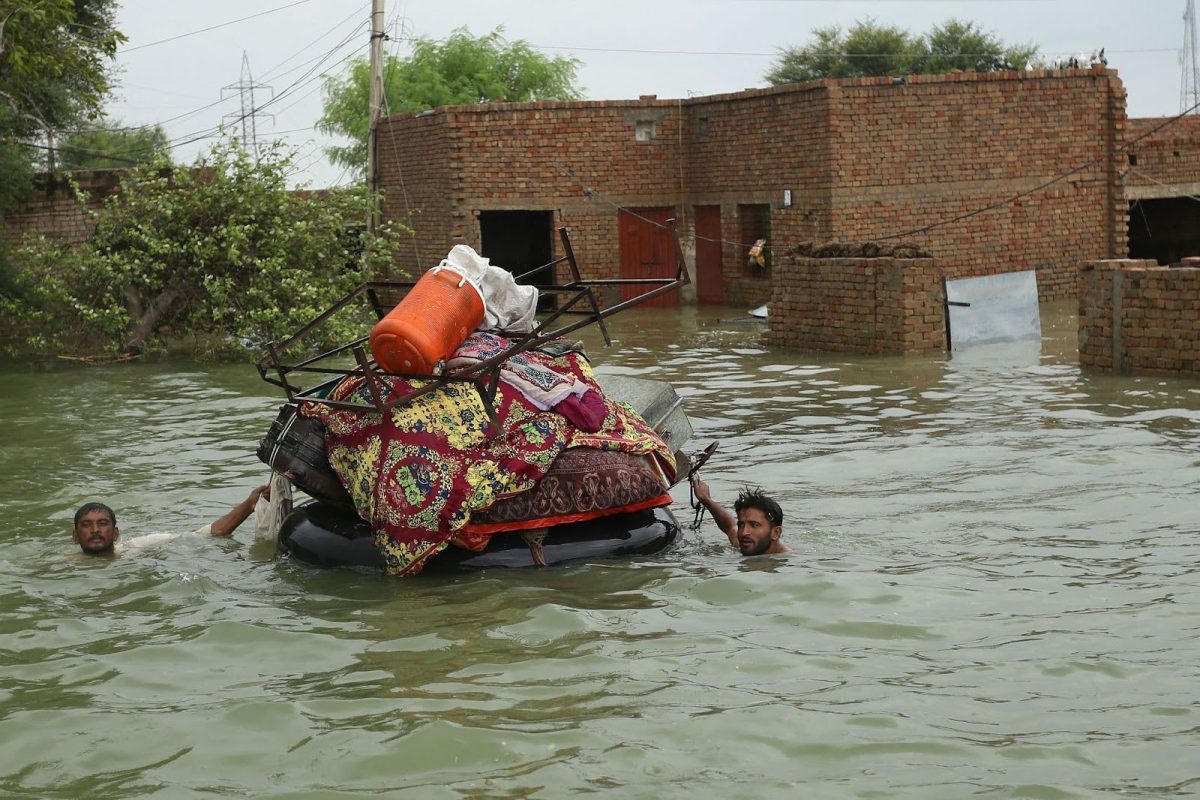In Pakistan’s Punjab province, fierce monsoons are flooding the country’s eastern region. The initial floods began on June 25, when a downpour hit the Sindh province, home to the country’s largest city, Karachi. Homes, crops, and roads suffered devastating damage. In June, over 50 people lost their lives, and since then, hundreds more have lost their lives as well.
Over the past few months, the frequency and severity of rainstorms have increased significantly, causing widespread havoc on the country’s livelihoods.
The latest data states that there have been 799 fatalities, over 1,000 injuries, and 29,311 displaced across Pakistan, with most of the fatalities being from KPK and Punjab. Overall, at least 1 million inhabitants are being directly affected by the floods, losing their livestock and homes.
In addition to the damage caused by floods, over 4 million Pakistani people, including farmers, are losing important crops as a result. Fields full of crops such as rice patties, sugar, and cotton have been washed away, damaging Pakistan’s economy and disrupting the market. The loss of these crucial crops is having large ripple effects on the entire structure of the country.
Crops and livestock were both destroyed, and cattle were seen drowned in muddy brown water. The stench of rotting animals fills the land. According to the Pakistan Bureau of Statistics, around 37% of Pakistan’s workforce relies on agriculture, even though the country faces some of the highest climate risks in the world.
This puts millions of Pakistanis at risk of losing their entire life’s work, particularly people with the fewest safeguards against extreme weather. “From an economic and agricultural standpoint alone, the potential for devastation is immense,” says Musadiq Malik, Pakistan’s climate minister.
Countless families are being displaced from their homes due to evacuations, and finding shelter in relief camps or host families to avoid homelessness.
Over two million have already been evacuated from Punjab, with an additional 150,000 from Sindh.
Over 2,000 in northern India and Punjab have been affected, with farmers losing their products and families losing access to electricity, clean food, and water. Important figures such as lawmaker Parminder Singh Pinki, from Firozpur in western Punjab, expressed that these floods are the worst they’ve seen in Pakistani history and that this amount of devastation is completely new.
A possible cause of the worsening monsoon conditions could be global warming and climate change induced by humans, with experts drawing similarities to the rise in temperature and increase in natural disasters.
Critics have also stated that the monsoon conditions are only worsening due to the lack of governmental care for the civilians. The population receives no warning before monsoons and natural disasters, only leading to increased deaths. However, spreading the word is difficult due to the mountainous and rural regions in Pakistan. Not everyone has access to weather warnings, leading to a striking impact.
Although the government is sending aid, the immense flooding prevents aid from reaching villages in desperate need of attention. So, in addition to little to no knowledge of the flooding apart from natural signs, rural areas struggle to receive aid in tangible ways.

